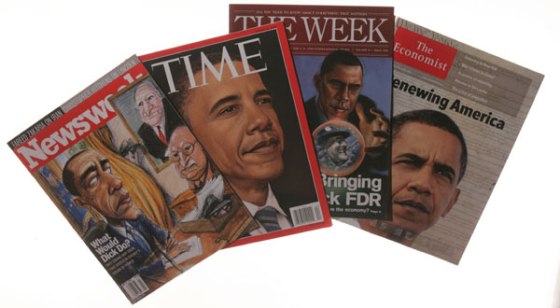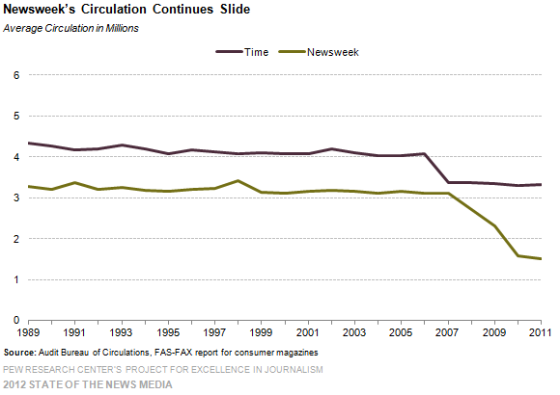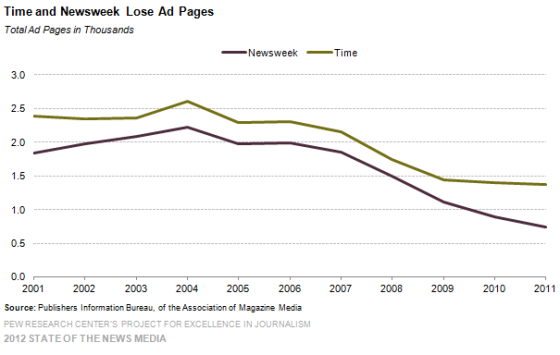
News magazines have competition but declining popularity throughout the recent years.
Photo by Tony Cenicola/The New York Times
The decline of print media stems from multiple factors that differ among different mediums. While for some prints, the decline is subtle, weekly newsweek magazines have definitely suffered for the last few years. The idea for people to read a magazine based around last week’s news is, well, old news. People are exposed to more readily available news sources. While some of these news magazines have changed to biweekly, cut positions or specific days of the week they are released, most have evolved into changing their approach of their content. See here a list of newspapers that have cut release days in order to save money and the newspaper itself.
In a The New York Times article, managing editor of Time, Richard Stengel, said, “We’re not in the business of telling people the news.” He said news is now a commodity, therefore the readers know it well before news magazines are published.
Instead of competing with immediate news sources, these magazines have expanded on feature stories and analytics rather than “breaking news”. This is to engage the readers in a more thought-provoking way rather than inform the reader of something that is different than yesterday’s news. Like stated in the Times article from 2009 above, Newsweek has continued to steadily decline in sales shown in this chart from 2012. Time, however, remains steady.

Circulation of Newsweek vs. Time in 2012. Taken from State of the Media.
The tactic of changing the content of news magazines has worked with keeping the magazines in circulation, some more than others, but the role of advertising is key to keep a magazine running. In this case, between Newsweek and Time, it has made a huge difference. Media relies on advertising to fund its existence, without it the source would fail. In 2008, both news magazines sold a third fewer ad pages than they did in 2004. Time, however, sold more at a higher prices. With more people willing to advertise in Time, the magazine has done remarkably better than other competitors. Other news magazines now have a more difficult time convincing advertisers to invest in a separate magazine with similar content. The graph below shows the decline of ads between Newsweek and Time.

Both Time and Newsweek continue to lose ad pages, but Time remains stable in 2012. Taken from State of the Media.
As you can see, both suffer ad losses for a few years before Time stabilizes between 2010 and 2012.
The State of the Media elaborates on more factors regarding the readers of news magazines for as recent as 2012. The trends of these magazines are worth comparing to be able to learn what needs to change and what is necessary for news magazines’ success.
Throughout this blog, I will find more trends of different print sources and their current statistics. I will elaborate on the success or unsuccess of moving toward the internet world compared to the print form of the magazine or newspaper.